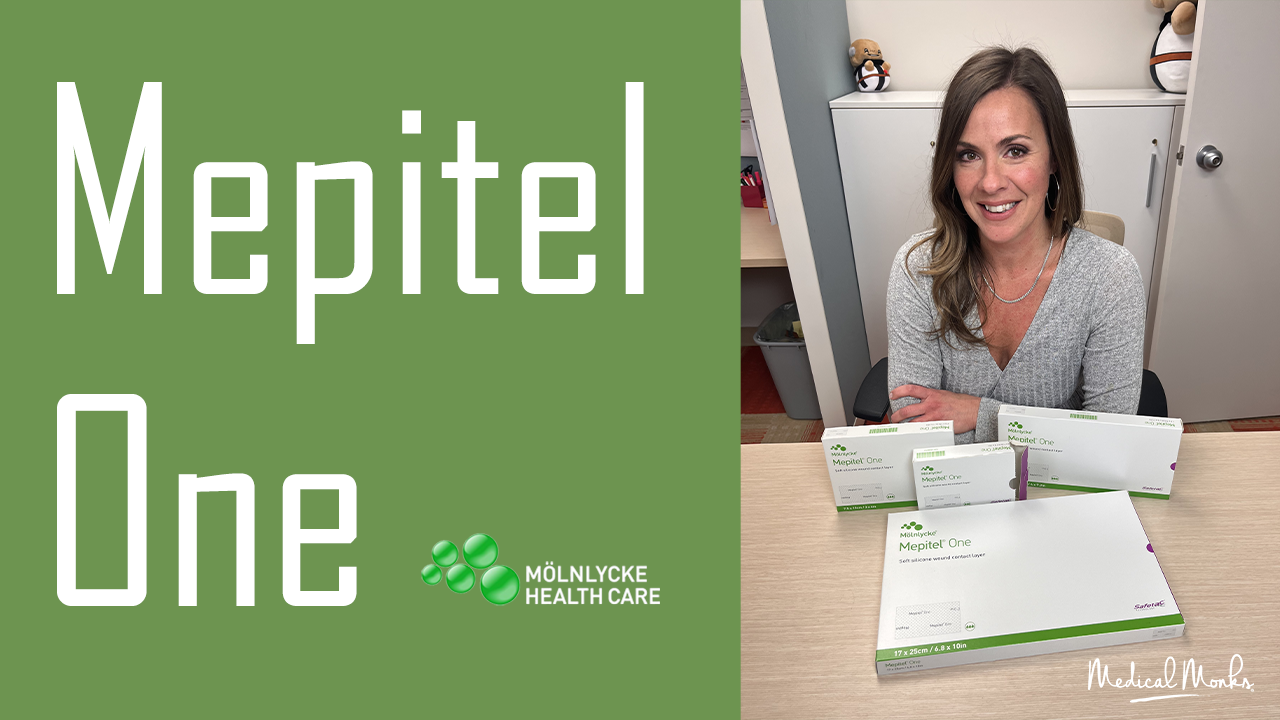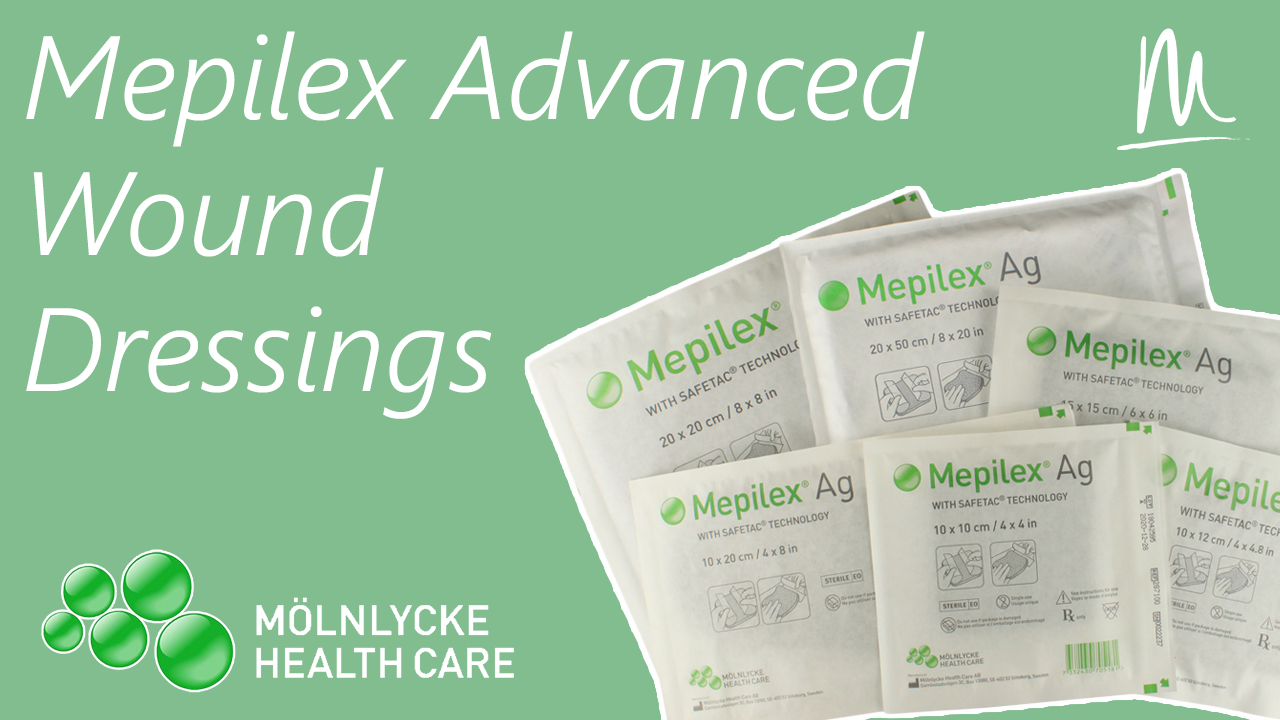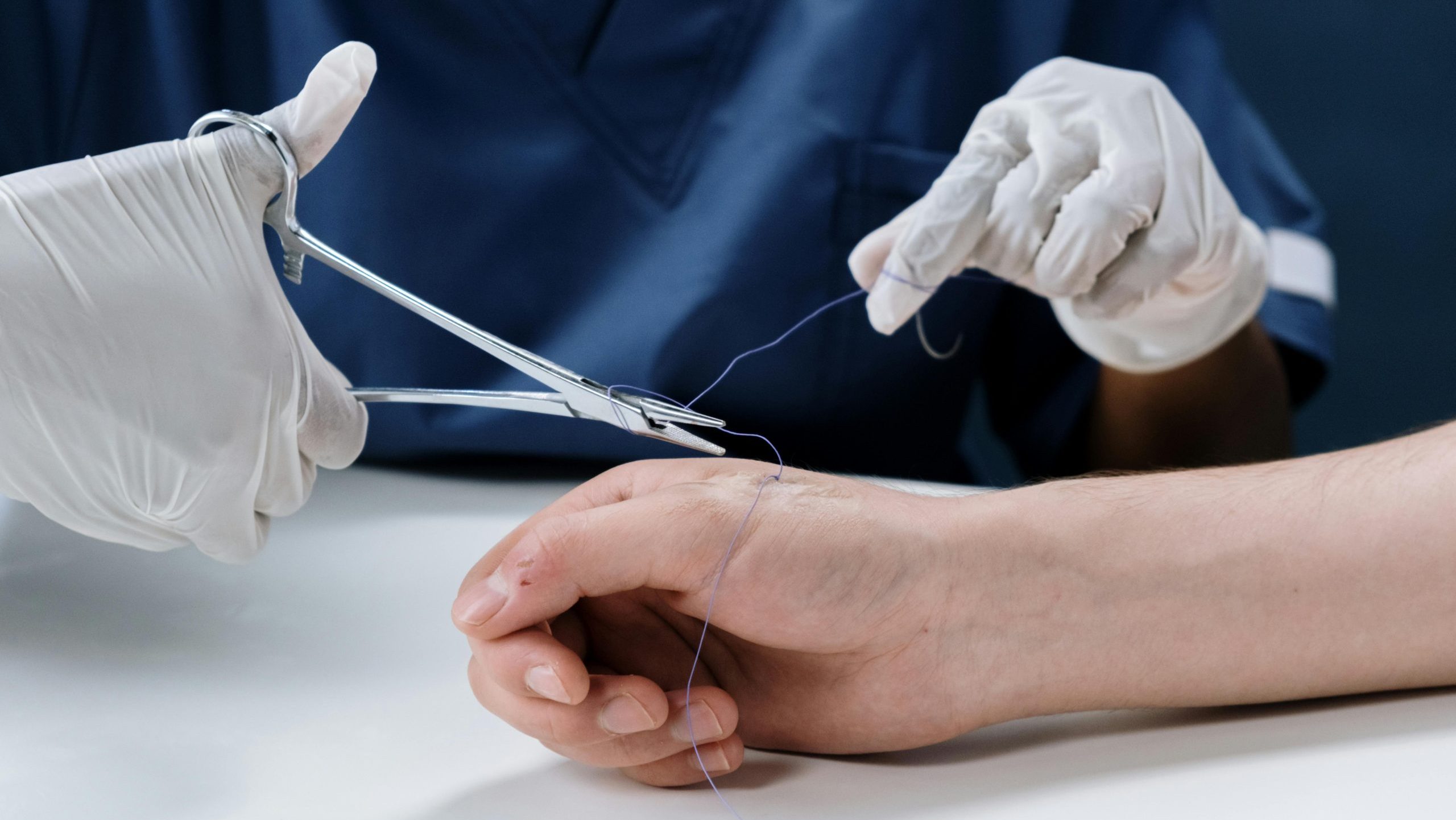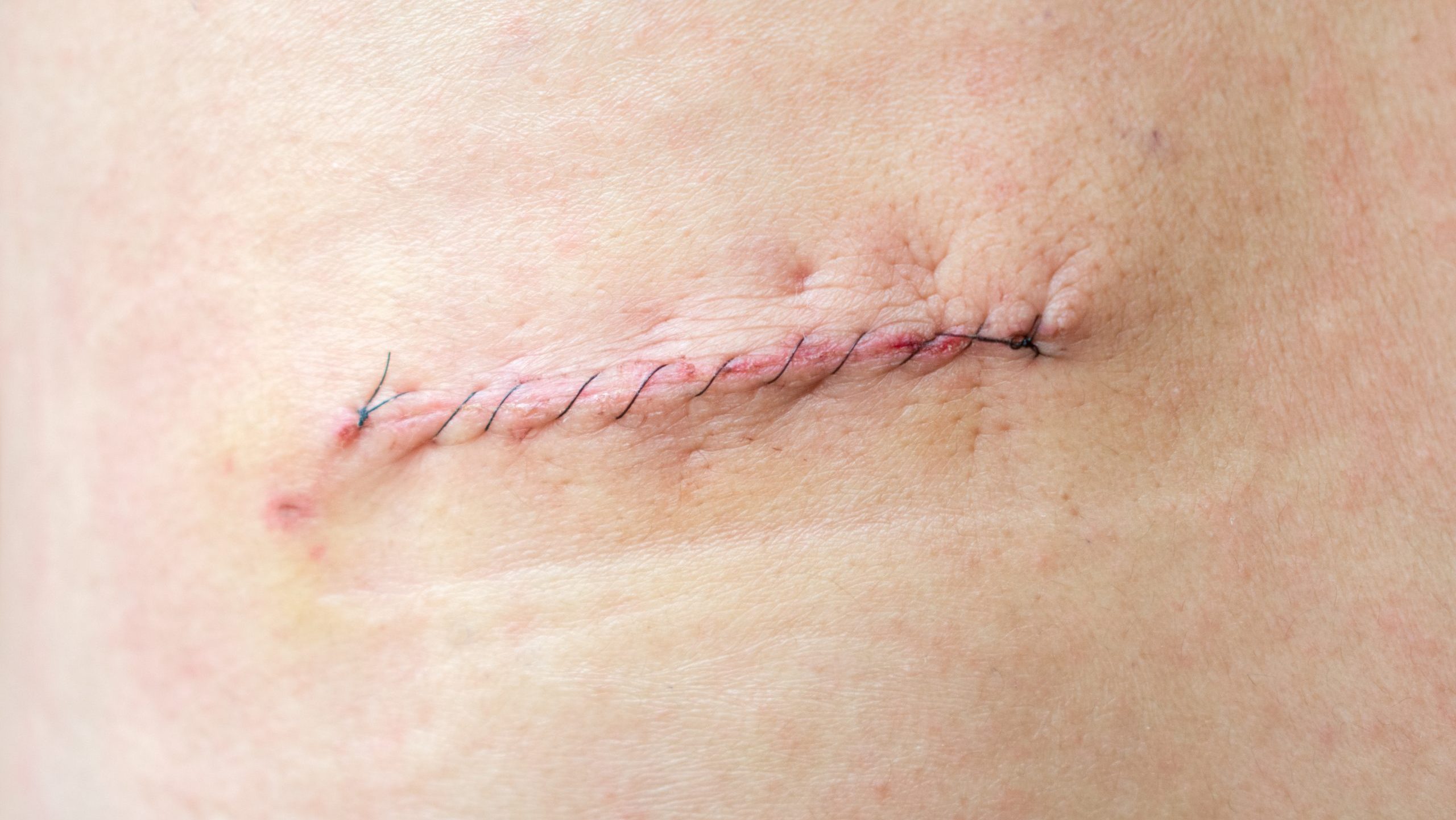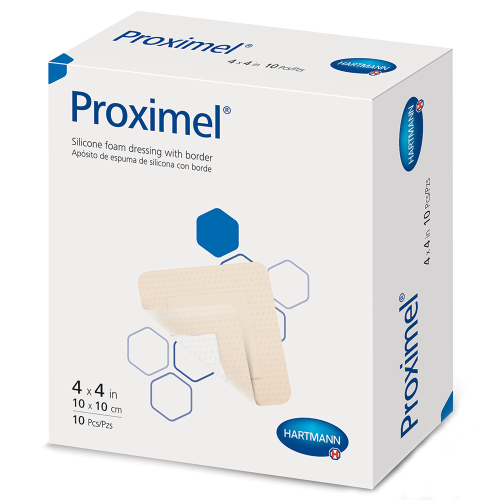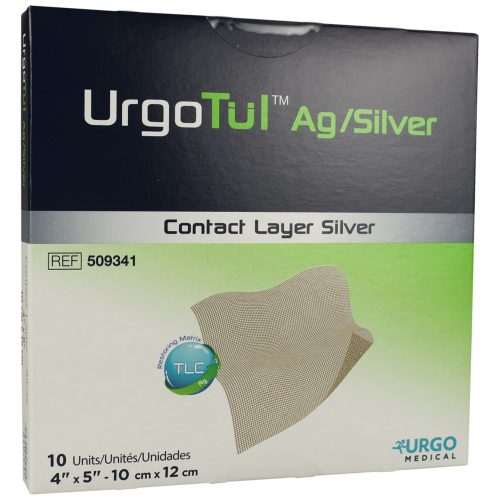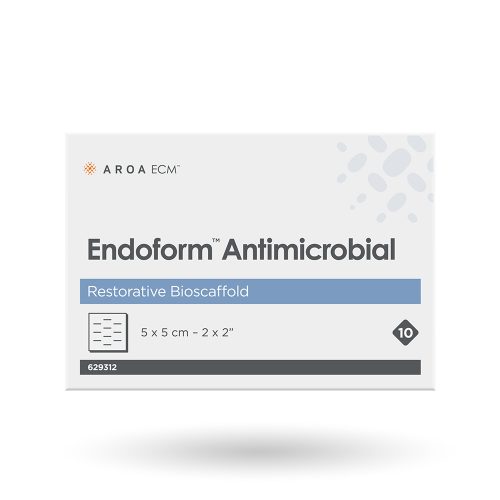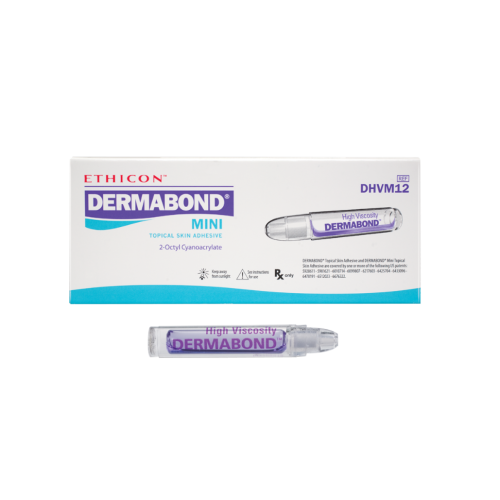Medical tapes serve many different, important functions. They can secure wound dressings, affix medical devices to the body, cushion or compress an injury, and even close wounds.
In this buyer’s guide, we’ll discuss different types of medical tapes, their uses, their drawbacks, well-regarded brands, and how to choose the right tape to meet your needs.
Who Needs Medical Tape? Clinical and Personal Use Cases
Medical tapes are used at home, in the clinic, and in hospital settings. Different types of tapes are used in different ways. However, in general terms, medical tapes are most often used to:
- Secure wound dressings
- Attach I.Vs, ostomy bags, and other medical devices
- Stabilize injuries
- Compress wounds or sprains
- Stabilize injuries
- Cushion
- Close cuts or suture needle wounds
As their uses are diverse, people ranging from athletes treating injuries to patients changing a wound dressing need medical tape.
Different Medical Tapes: Materials, Adhesives and Benefits
Medical tape products are categorized by the tape’s backing material, which is connected to the tape’s primary use. The six most common medical tape categories are surgical tapes, cloth tapes, silicone tapes, foam tapes, zinc oxide-based adhesive tapes, and elastic athletic tapes.
Understanding the ins and outs of each category lets you make an informed choice when buying tape.
Surgical Tape
Surgical tape is a category of pressure-sensitive, adhesive tape typically used to hold bandages to wounds. These tapes are also called skin adhesive tapes (SATs).
SATs are generally used as a secondary dressing, though skin-sensitive surgical tales are sometimes used to close small wounds—particularly cuts or wounds left by sutures, staples, or minimally invasive medical procedures.
Surgical tape conventionally uses a paper backing. But, it’s an umbrella category, and it includes tapes made from a range of materials.
Most surgical tapes have paper, cloth, foam, or a porous synthetic backing. Adhesives similarly vary. Popular surgical tapes use acrylic, copolymer, and silicone adhesives. Copolymer and silicone adhesives are recommended for their gentleness on skin.
High-porosity paper Surgical Tape
High-porosity paper tape, like Micropore™ tape, is a subtype of surgical tape designed specifically for use on fragile, at-risk skin. It combines a skin-safe silicone adhesive with a breathable, highly-porous paper backing. It’s designed to secure light tubing or small-to-medium dressings.
Cloth Tape
Cloth tape, also called fabric tape, is a medical tape made of fibers. Cloth tapes can be woven or non-woven sheets. Medical cloth tapes are typically made from breathable, soft, durable fabrics with a degree of elasticity.
Common cloth medical tape fabrics include polyester, rayon, nylon, cotton, spandex, and silk. Certain medical tapes use cloths treated with antimicrobial and water-repellent coatings, and many are hypoallergenic. Fabric tapes are typically used to secure tubing and dressings.
If you need particularly soft, affordable, or hypoallergenic medical tape, cloth tape is a smart choice.
Elastic Athletic Tape
Elastic athletic tape is a subcategory of cloth tape. It’s used by athletes and physical therapists to treat muscle and joint injuries. Most of these athletic tapes are made of high-stretch fabric like spandex, and they use either an acrylic- or zinc oxide-based adhesive.
Elastic athletic tape is particularly effective at reducing inflammation, improving blood flow, and managing pain.
If you’re treating athletic injuries, or engaging in physical therapy, this might be the right choice of medical tape. Note, though, that these tapes are not gentle on skin, nor hypoallergenic. They’re not appropriate for fragile skin or for securing dressings on complex wounds.
Synthetic Polymer Tapes (EVA and Silicone)
Medical tapes made of synthetic polymers, like ethylene vinyl acetate (EVA) and silicones, have unique clinical uses.
For example, silicone tapes can treat hypertrophic and keloid scars, and they can speed wound healing by enabling an appropriately moist healing environment. In the same vein, EVA medical tapes are waterproof, antibacterial, and offer strong adhesion and insulation alike.
If you’re securing heavier medical devices, or you’re taping in a damp environment, medical tapes in this category are a wise choice.
Foam Tapes
Foam medical tapes combine cushioning, synthetic foam backing with adhesive. Most foam tapes are shock-absorbing, and they’re intentionally designed to offer greater cushioning and protection to a dressed wound or joint. They’re often used to add cushion to a medical device or dressing worn long-term, to improve patient comfort.
Foam medical tapes are also, typically, highly flexible. They can stretch in multiple directions to cover joints and secure dressings on challenging physiological locations. Foam tapes are sometimes used as a secondary dressing as well as an adhesive.
Zinc Oxide-Based Adhesive Tape
Unlike other medical tape categories, zinc oxide tapes are actually categorized by their adhesives, not their backings.
Zinc oxide is mildly astringent and naturally antiseptic. Zinc itself also speeds wound healing, particularly when an individual is zinc-deficient. So, when it’s used to create an adhesive, the resulting tape shrinks pores, absorbs oils, and blocks out contaminants—forming a fast, strong bond on skin.
Zinc oxide-based tapes aren’t elastic, and they vary in their degree of breathability and water resistance. The tapes’ rigidity makes them a good choice for stabilizing joints, and they’re useful as a primary dressing for soft tissue and fingertip injuries. Zinc oxide-based tapes also effectively prevent injuries and swelling.
Spotlight: Medical Tape Products
When purchasing medical tape, certain brands’ products stand out. Tapes with reputations for quality in their respective categories include:
- 3M Solventum Microfoam™ Surgical Tape is a waterproof foam tape.
- It’s elastic enough to secure dressings on joints while it cushions with its patented, shock-absorbing material.
- 3M Solventum Multipore Dry Surgical Tape is a micropore surgical tape.
- It’s designed to reliably secure catheters or medical devices on high-moisture areas.
- Curasilk Hypoallergenic Silk Tape is a cloth tape utilizing silk’s natural properties.
- It’s strong, breathable, and invisible on radiology scans—making it ideal for medically delicate taping.
- Simpurity DermaPro Waterproof Silicone Tape is a waterproof silicone tape.
- It’s designed to secure wound dressings without causing harm or pain to sensitive skin upon removal.
- AC-Tape Elastic Adhesive Tape is a med-strength elastic, athletic tape.
- It maintains its strength under tension, making it useful for sports taping and compression.
Buying Medical Tapes—What You Need To Know
When shopping for medical tapes from reputable brands, it’s important to understand what qualities make a given tape product more or less useful for your purposes. Therefore, before delving into product reviews and ratings, it’s wise to understand the following features and traits:
Hypoallergenic & Latex-Free
Hypoallergenic products are typically free of common allergens, fragrances, dyes, and preservatives. However, there is no official standard products must meet to qualify as hypoallergenic. Fortunately, common allergens like latex are noted on product labels, and many medical tapes are verifiably latex-free.
Uncommon Allergens and Irritants
If you’re concerned about the presence of an uncommon allergen in a medical tape product, find the product’s regulatory data sheet.
Most medical products’ regulatory data sheets are available on the product manufacturer’s website. Each data sheet includes a detailed list of the presence or absence of compounds and materials in a product—including those that are occasionally allergenic.
Adhesive Strength and Gentleness
Medical tape adhesives vary widely in their relative degrees of strength and gentleness.
Strong Adhesives
Stronger adhesive is necessary to secure dressings in moist or damp areas, to resist debonding or friction, and to secure heavier medical devices. The strongest adhesives used on medical tapes are usually synthetic rubbers, acrylics, and high-strength acrylates.
However, as a rule, the stronger an adhesive is, the more likely it is to cause trauma to skin when removed.
Gentle Adhesives
Gentle adhesives are non-irritating, and can often be repositioned if needed. Gentle adhesives are used to secure on fragile or sensitive skin, or to secure devices that may need adjustment (like nasal cannulas).
The gentlest medical tapes use silicone or hydrogel adhesives.
Combination Adhesives
Certain synthetic tapes are both strong and gentle when used as directed. For example, micropore silicone tapes are stronger than typical silicone adhesives, as the backing is designed to increase resistance and strength.
Breathability, Flexibility, and Shock-Absorption
Breathable medical tape maintains an optimal healing environment by enabling taped skin to naturally expel excess moisture, preventing maceration irritation due to buildup.
Flexible tape can readily stretch to cover joints and dressings in complex locations on the body. Shock-absorbing medical tape materials, like foam, gives dressed wounds extra cushion, protecting them from damage.
Best Medical Adhesive Tapes: Reviews and Recommendations
3M Solventum Medipore H Soft Cloth Surgical Tape
One of the best medical tapes in both the “cloth” and “surgical” categories is Solventum Medipore H Soft Cloth Surgical Tape. It reliably stabilizes and secures ostomy pouches, dressings, and similar medical materials—with maximum gentleness.
Its skin-safe adhesive is comfortable, neither irritating skin while in use, nor risking injury to fragile skin during removal. As a breathable and flexible cloth tape, it adapts to patient movement and swelling to improve healing.
What People Are Saying
Customers appreciate that Solventum’s Medipore H Soft Cloth Tape strongly secures devices and dressings, tears easily, and doesn’t irritate skin. In their own words:
“[T]he best tape on the market.”
“Once this product is put in place, it stays in place.
Great product. Easy to use and [there’s] no allergy effect.”
“Use everyday. Like that does not require scissors to cut. [It] adheres well.”
Rating: 4.8 out of 5.
Based on 20 independent reviews.
Mepitac Soft Silicone Tape
Among the highest-ranked silicone medical tapes is a brand offering its unique Safetac® technology: Mepitac Soft Silicone Tape. It’s designed for sensitive and fragile skin, and it’s easy to re-adjust or remove painlessly. As a result, it can be used for multiple days before it needs to be replaced.
Mepitac Soft Silicone Tape conforms to uneven, contoured surfaces, and it allows evaporation while barring external water from contact—making it effective for moisture- and scar-management.
What People Are Saying
Buyers rave about Mepitac Soft Silicone Tape’s gentleness on skin, easy removal, and positive effect on scars. Here’s what they have to say:
“Easy to take off. I use it for taping my eyelid closed at night.”
“Does not irritate my skin. Not hard to remove”
“Great invention! My ENT plastic surgeon gave me some of this stuff. I bought 3 rolls to use to cover recent skin cancer removal and reconstruction scars on my face (nose). [A]nd to cover my nose while [I’m] out in the sun in the future. Looks so much nicer than a white bandage when I go out. Sticks well, but can be removed easily without hurting skin with stitches.”
Rating: 4.7 out of 5. 10 independent reviews.
Mefix Dressing Fixation Fabric Tape
One of the strongest cloth medical tapes on the market is also highly-regarded for its gentleness: Mefix Dressing Fixation Fabric Tape. Its unique polyacrylate adhesive formula provides secure fixation for dressings, tubes, and cannulas, while enabling painless re-adjustment and removal.
Its elastic cloth backing is flexible and breathable, contouring with the body’s natural motion while holding devices and dressings firmly in place.
What People Are Saying
“I’ve required tape for a variety of health needs over the years. I found Mefix fabric tape to be ideal [at] providing great sticking strength while avoiding the painful loss of skin when removing. Just a great tape!”
“It’s absolutely my favorite tape. [I] use it a lot. It doesn’t stick to your skin.”
“My mother needed this product and it was referred by her nurse and it works!”
Rating: 4.9 out of 5. 7 independent reviews.
Hypafix Retention Tape
One of the best water-resistant, secondary dressing tapes is Hypafix Retention Tape. It’s easy to use, flexible, and its adhesive makes tape removal painless. Moreover, its polyurethane film enables excess moisture evaporation while blocking external water and bacteria.
What People Are Saying
Helps reinforce the borders of the urostomy bag I’m using. [It’s] breathable and gentle to the skin.
“[A]bsolute best stuff, easy to use, and [it] stays where you put it.”
“Great tape for wound care. Easy to use.”
Rating: 5.0 out of 5. 7 independent reviews.
Shop For Medical Tape With Medical Monks
Medical tapes empower people to secure medical devices and dressings, cushion healing or fragile parts, stabilize injuries, and even treat scar tissue. At Medical Monks, our selection of medical tapes includes a diverse range of options.
Be sure to consult with your healthcare provider to make sure any treatment is right for you. If you’d like to learn more about our products, call our team at 844-859-9400. Or, chat with one of our agents online.

The MEDICAL MONKS STAFF brings to the table decades of combined knowledge and experience in the medical products industry.
Edited for content by JORDAN GAYSO.

